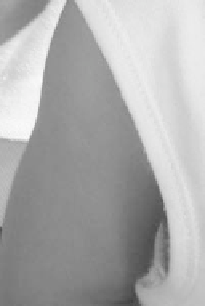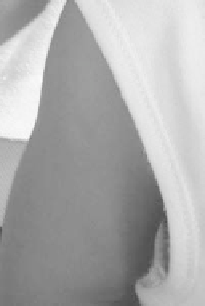Image Processing Reference
In-Depth Information
FIGURE 7.48 (See color insert following page 428.)
Image showing the rendering of
color sweeps (left: original image; middle: processed image with ICC profile from K-restricted
GCR after one step [contours are visible]; right: same after preconditioning steps [contours are
removed]).
TABLE 7.10
Round Trip Error with Respect to Number of Iterations
Used in the Preconditioning Method with Filtering Step
Included in the K-Restricted GCR Algorithm
D
E
a
*
D
E
2000
Preconditioning
Steps
Mean
95%
Max
Mean
95%
Max
None
0.75
2.47
12.67
1.35
3.54
23.82
1
1.08
3.82
6.18
1.90
5.35
27.63
2
1.13
4.06
6.52
1.96
5.72
29.20
3
1.16
4.29
6.79
2.01
5.96
29.54
4
1.18
4.39
6.98
2.04
6.06
29.68
5
1.19
4.49
7.23
2.06
6.14
29.77
6
1.21
4.53
7.31
2.08
6.21
29.82
3. Removes the nonuniqueness (degeneracy) problem due to the use of a 3-to-3
inversion by selecting appropriate sub-gamuts.
4. Provides more room for the controller on the actuators when the control-
based inversion is used.
5. Allows for a unique solution for each pixel once a gamut class has been
chosen. Hence, in-gamut color sweeps can be rendered without contours.
Since one of the toners, C, M,orY, is always equal to zero for any given color, the
toner usage is usually smaller than that of other GCRs.
Figure 7.49 shows the CMK, MYK, and CYK gamuts along the chromatic axes
when viewed from the top of the gamut. In a typical four-color printer, there exists






Search WWH ::

Custom Search